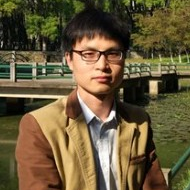Environmental Energy Harvesting and Storage
A special issue of Sustainability (ISSN 2071-1050). This special issue belongs to the section "Energy Sustainability".
Deadline for manuscript submissions: closed (30 September 2021) | Viewed by 8040
Special Issue Editors
Interests: energy conversion and storage; printable electronic devices
Special Issues, Collections and Topics in MDPI journals
Interests: new energy; environmental energy; water
Interests: thermal energy harvesting; micro environmental energy harvesting; self-powered system
Special Issue Information
Dear Colleagues,
The increasing energy consumption worldwide has promoted the rapid development of advanced energy research. In a bid to address the expanding energy crisis and environmental pollution, researchers have successfully developed various environmental energy-harvesting devices, including nanogenerators, photovoltaic devices, solar steam generators, and thermoelectric devices. These energy-harvesting devices can be used in combination with advanced energy storage devices (batteries and supercapacitors) to implement a self-powered system, so that the collected energy can be stored to achieve a sustainable power supply. It is believed that such a self-powered strategy not only provides new ideas for the energy management of electronic equipment but will also further boost the prosperity of the Internet of Things.
This Special Issue focused on “Environmental Energy Harvesting and Storage” will present a broad range of topics covering the fabrication, characterization, and applications of energy storage and harvesting devices. These devices include but are not limited to metal-ion batteries, solid-state batteries, supercapacitors, metal-ion capacitors, nanogenerators, thermoelectrics, photovaltics, solar steam generators, etc. The goal is to combine energy storage and environmental energy harvesting to showcase the latest innovations and developments related to the above topics, and to use sustainable materials to open up markets and future opportunities in energy harvesting and storage fields.
We kindly invite you to submit a manuscript(s) for this Special Issue. Full papers, communications, and reviews are all welcome.
Dr. Peihua Yang
Dr. Jia Li
Dr. Tianpeng Ding
Guest Editors
Manuscript Submission Information
Manuscripts should be submitted online at www.mdpi.com by registering and logging in to this website. Once you are registered, click here to go to the submission form. Manuscripts can be submitted until the deadline. All submissions that pass pre-check are peer-reviewed. Accepted papers will be published continuously in the journal (as soon as accepted) and will be listed together on the special issue website. Research articles, review articles as well as short communications are invited. For planned papers, a title and short abstract (about 100 words) can be sent to the Editorial Office for announcement on this website.
Submitted manuscripts should not have been published previously, nor be under consideration for publication elsewhere (except conference proceedings papers). All manuscripts are thoroughly refereed through a single-blind peer-review process. A guide for authors and other relevant information for submission of manuscripts is available on the Instructions for Authors page. Sustainability is an international peer-reviewed open access semimonthly journal published by MDPI.
Please visit the Instructions for Authors page before submitting a manuscript. The Article Processing Charge (APC) for publication in this open access journal is 2400 CHF (Swiss Francs). Submitted papers should be well formatted and use good English. Authors may use MDPI's English editing service prior to publication or during author revisions.
Keywords
- batteries
- supercapacitors
- low-grade heat
- thermal energy
- solar energy
- solar steam
- nanogenerators
- thermoelectrics
- photovaltics
- self-powered systems







